Recently we reviewed the AMD EPYC 3451 16-core CPU which was our first dual-die solution for the EPYC 3000 series. We now have the 12-core model, the AMD EPYC 3351 on the review block. This is a new processor that offers 12 cores, up to 64x PCIe lanes, 8x 10GbE NICs, and 1TB of quad-channel DDR4, in a 80W TDP embedded package. Perhaps the best part is that this chip is offered at a price that is less than the Intel Xeon D-1541, a popular 8-core chip in the embedded market.
Key stats for the AMD EPYC 3351: 12 cores / 24 threads with a 1.9GHz base clock, 2.75GHz all-core boost, and a maximum 3.0GHz turbo boost. There is 32MB of onboard L3 cache. The CPU features a configurable 60-80W TDP. These are $539 list price parts.
Here is the lscpu output for the AMD EPYC 3351:
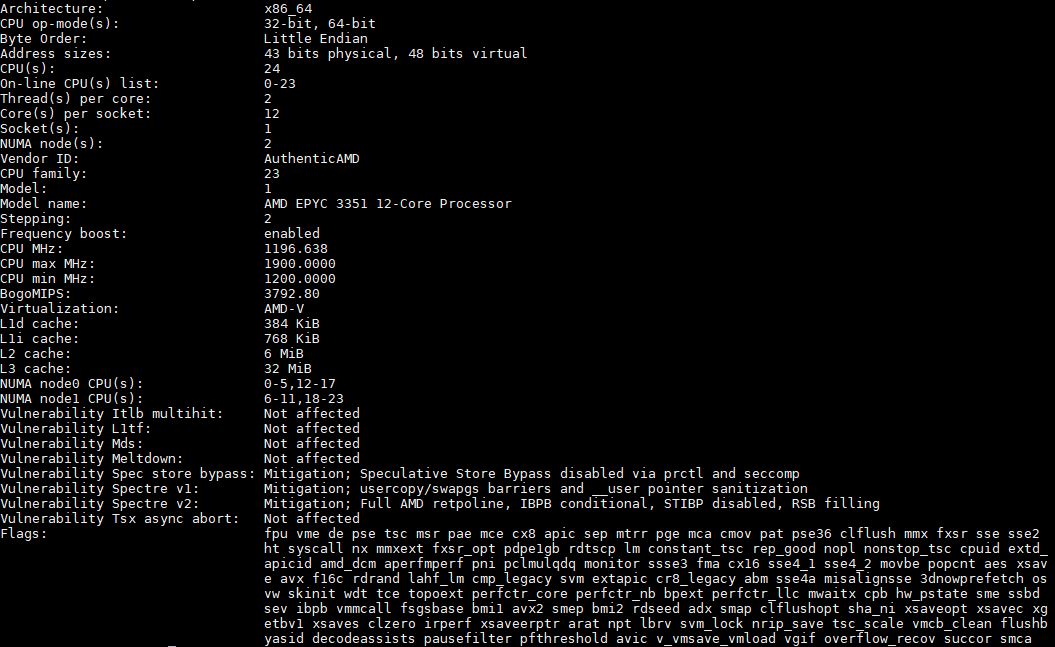
Something that longtime readers may have noticed is that these chips effectively have taken the place of both the original AMD EPYC 3301 and EPYC 3351. AMD added a configurable TDP to cover the two SKUs then rationalized the SKUs to the re-configured EPYC 3351. We covered this in AMD EPYC 3000 Line Gets Updated Adding and Dropping Models along with a few other changes.
This 12-core Zen architecture CPU gets the full benefit of 8MB of L3 cache per 3 cores for 32MB of L3 cache total. This is due to AMD’s dual die design fo the higher core-count EPYC 3000 embedded CPUs. As a result, we also get a topology that looks like this:
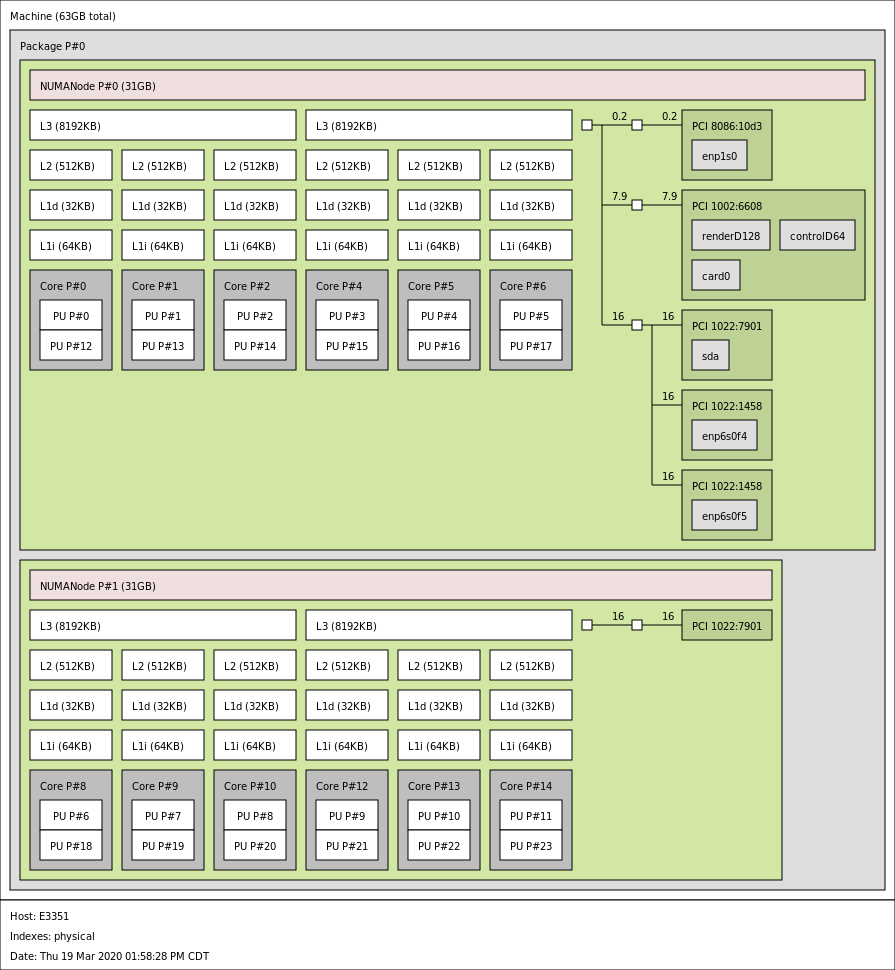
As one can see, there are two NUMA nodes here. Each NUMA node has half of the PCIe lanes, 10GbE ports, and memory attached to it. In many ways, this looks like a dual-socket server and given the DDR4-2666 memory speeds it is not too dissimilar to something such as a dual Intel Xeon E5-2670 (V1) server in a single embedded part at lower power.
While the dual-die approach is different from its primary Intel Xeon D competition, the feature set puts it in some cases between the Xeon D-1500 series and the D-2100 series, and in some cases provides more than either. We are going to have a bigger competitive breakdown at the end of this article in our market impact section. What is important to keep in mind is that the 12-core Xeon D-1557 is $694 list price while the 12-core Xeon D-2163IT is $930. Even with this massive I/O layout (for an embedded chip), the EPYC 3351 is still significantly less expensive than its primary competition.
If you want to hear more about the platform, we had a video on the EPYC 3451 version:
Test Configuration
For this testing we are using the updated AMD Wallaby platform:
- System: AMD Wallaby
- CPU: 1x AMD EPYC 3351 12-core
- Memory: 4x 16GB DDR4-2666 DDR4 DRAM
- OS SSD: 1x Intel DC S3710 400GB Boot
Some of the major updates here are that we get more PCIe and network slots. With the dual-die configuration, we get up to 64 PCIe lanes and up to 8x 10GbE ports, 32 lanes and 4 ports per-die.
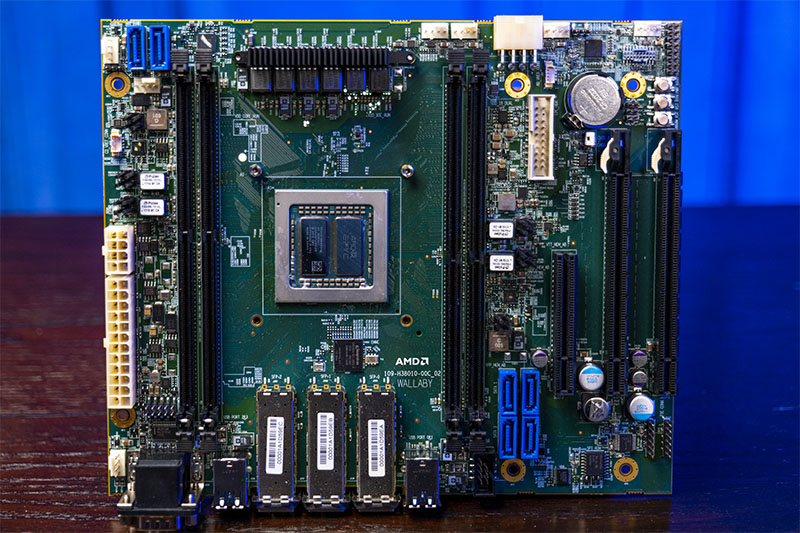
The Wallaby platform exposes some, but not all of those features. It does, however, expose more than the version we used for the EPYC 3251 testing and, importantly, has the dual die part along with quad-channel DDR4-2666 memory support. We usually prefer using production boards from a partner, but for embedded products, we often have to use reference platforms.
Next, it is time to get to our benchmarks.

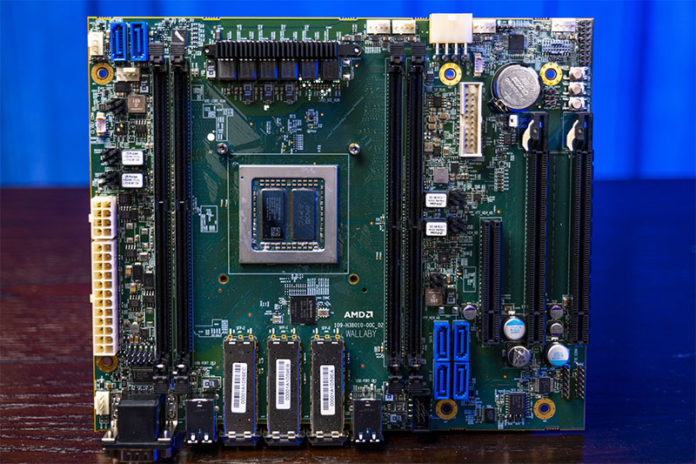
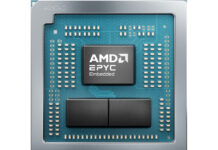
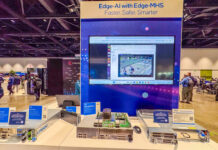
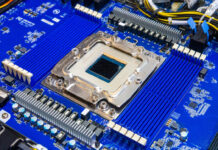
In the test config , shouldn’t the 3351 have only 12 cores?
Can someone just make that exact board. Double stack the SFP+ cages and add a BMC for oob management?
Is this a commercially available board? It looks awesome
> These are $539 list price parts.
hmm. list price for what? for epyc cpu the list price was $450
also, what is the name of this board? what is being tested here?
Andres/alt: this is AMD Wallaby platform as mentioned in the text. I guess it is not commercially available if you do not like over-priced engineering boards made by/for SoC vendor to show stuff to its customers (which are other hardware vendors). Just wait for common vendors (Kontron/Advantech/Supermicro etc.) to add this into their portfolio.
I think I am with Nate77 and alt. Let’s have a commercially available board and let it have 8 10 gig Ethernet ports.
Testing an AMD demo board is all very nice, but XEON D is on the shelves NOW.
alt – that is the 1K list price AMD sent as of a few weeks ago for the EPYC 3351 SoC.
Also, yes, this was done on the Wallaby development platform.
There reviews are always interesting. The embedded AMD parts are making me want to replace my home lab… but it doesn’t seem there are any groups selling them. SuperMicro only has lower end ones. It would be great if as part of these reviews you could reach out to OEMs to see what their ETA for availability is.
@Nate77 @emerth – do you think a software solutions can saturate 8 10 Gbit links, while doing something meaningful?
If so, please include some benchmark data.
So where can we buy this???